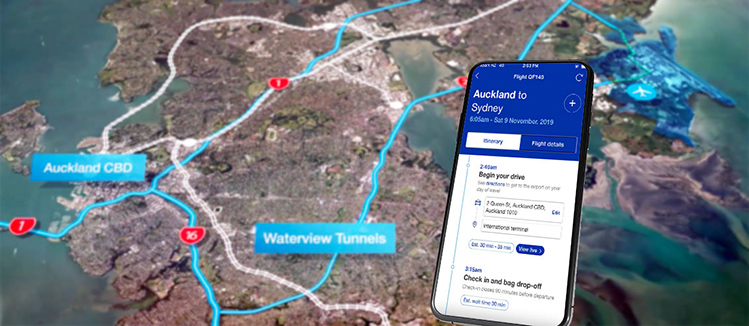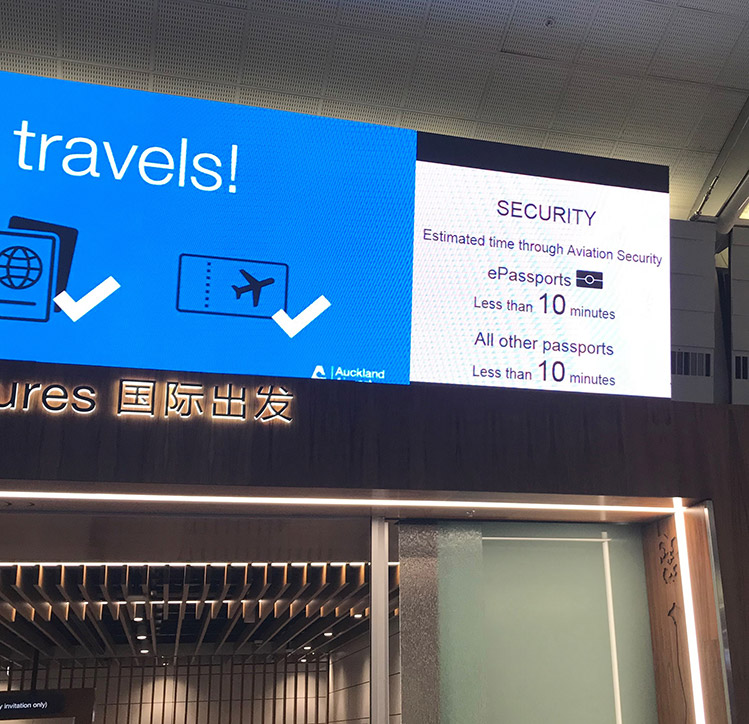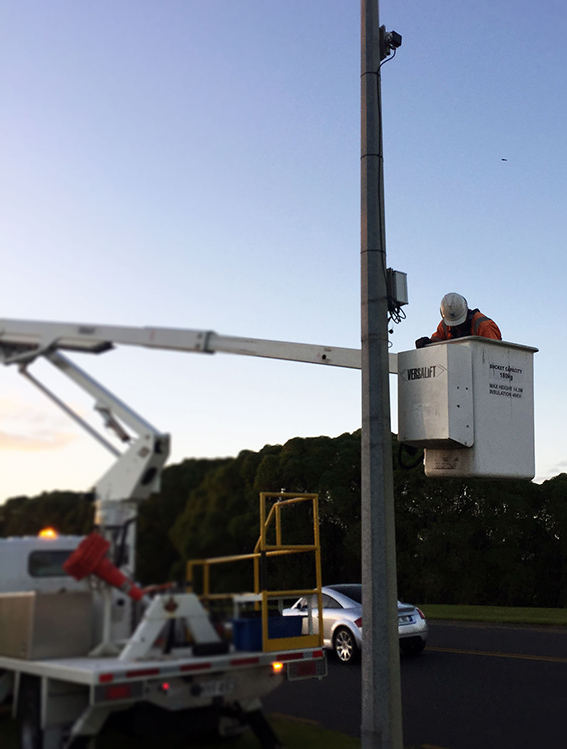Auckland Airport is not only New Zealand’s largest and busiest, but also one of the fastest-growing airports in Australasia. With a need to ensure optimal resource coordination and infrastructure use, the airport engaged with Veovo to roll out the region’s first Airport Collaborative Decision Making (A-CDM) initiative.
When a secondary, but no less critical, challenge reared its head, the airport and Veovo extended their partnership to create a solution that would get travellers from door to departure with less stress, and more time to spare.

Veovo, together with infrastructure partners Beca, have rolled out a solution to measure traffic flow between the CBD and Auckland Airport, as well as road usage within the terminal complex. Rather than relying on CCTV cameras, they found that data-driven insight gathered from sensors would enable more effective real-time traffic management.
Auckland Airport welcomed over 21 million passengers in 2019, and forecasts predict throughput will at least double within the next 20 years. This creates the challenge of how to expand operational capacity, while finding ways to reduce queues and ensure a smooth passenger process.
Increasing the productivity of its assets, processes and operations was identified as key to improving performance and making journeys better for travellers, visitors and partners.
However, some real-time communication gaps were impacting efficiency, making it difficult to accurately predict both a flight’s on block time and readiness to depart. Auckland Airport needed a way of sharing operational data in real-time to optimise decision making and resources across the entire airport ecosystem and improve on-time departures.
Smarter operational decision-making
Auckland Airport, together with its Air Traffic Control, airlines, ground handlers, government border agencies and other airport partners, decided to embrace A-CDM. This would involve building stronger structures of operational collaboration and developing a platform for the access and distribution of up-to-date, flight-related information.
Veovo’s solution, which integrates Resource and Revenue Management, Customer Engagement and A-CDM capabilities, was chosen and deployed. With built-in interoperability and seamless data exchange, the solution delivered on every requirement, including embedded intelligence for better flight predictability, mobile-enabled software and an intuitive, easy-to-learn interface.
From flight to flow
While the airport was engaging in improving the turnaround process, it also became aware of another problem that was impacting the ability to get passengers to the gate on time.
To manage both passenger and traffic flow, Auckland Airport realised they needed a bird’s-eye view of the entire system, as well as a detailed, up-close analysis of ongoing issues. As they were already working with Veovo to improve aircraft throughout, the airport requested a solution to resolve the customer flow challenges. These involved smoothing the journey from door to destination for a safe, timely, and stress-free arrival at the gate.
Veovo, together with infrastructure partners Beca, rolled out a solution to measure traffic flow between the CBD and the airport, as well as road usage within the terminal complex.
Rather than relying on CCTV cameras, they found that data-driven insight gathered from sensors would enable more effective real-time traffic management. By detecting drive time anomalies, the airport was able to assess when and how much to intervene, then measure the intervention’s effectiveness.
Key to project success was also the focus on customer-centric outcomes. The airport team set an overall maximum target journey time of 30 minutes from joining the back of an airport-bound queue to arriving at the terminal.
“Sharing data between multiple solutions provides a solution that no other product in the industry can currently reproduce – large-scale, seamless, door-to-door movement coordination between different modes of transport,” says Peter Knudsen, General Manager, Veovo. “And because it’s not area-specific, it can be considered one of the first real, tangible steps to true multimodal transport management.”
In the airport
Inside the terminal, Veovo’s Passenger Predictability solution was also installed to measure queue times and volumes, and movement patterns. This data is displayed in real-time and analysed to provide predictive arrivals curves. This, in turn, enables improved resource planning and management to cope with expected busy periods, as well as live congestion-handling. Wait-time data is also displayed on screens at security checkpoints, helping manage queue time expectations and reducing stress.

Veovo’s Passenger Predictability solution has been installed at Auckland Airport to measure queue times and volumes, and movement patterns. Wait-time data is also displayed on screens at security checkpoints, helping manage queue time expectations and reducing stress.
Immediate insights, long-term benefits
As a result of the A-CDM project, arriving flights now spend less time waiting on the tarmac, resulting in fuel savings for airlines and a reduced carbon footprint. For international flights, there is less congestion on the arrivals apron, an increase in the number of flights receiving pushback approval within 60 seconds of request, and an uptick in departure performance.
“Sharing on-the-go operation information across all CDM partners has created efficiencies throughout our business,” says Mark Wilson, Operations Performance Delivery Manager, Auckland Airport. “This has led to more effective and smart decision-making.”
The traffic flow insights are now helping the New Zealand Traffic Agency (NZTA) to make informed decisions to improve the journey, including optimising signal timing. With this door-to-destination insight, they were able to reduce travel time to the airport by eight minutes. Data analysis is also helping with planning decisions for road network maintenance and infrastructure projects.
“The intelligence that the solution is delivering has already proved its value, by providing automated alerts on delays, real-time counts on traffic flows and delays, and intelligence on the origin and destination of vehicle movements,” says Richard Young, Senior Associate, Beca.
Auckland Airport is among the first globally to tackle the ambitious, innovative and collaborative challenge of holistic, end-to-end predictability insight from door to departure. Numerous other airports are following suit, including Amsterdam Schiphol, Birmingham, Keflavik, Bristol and Billund, having recognised the value of comprehensive, seamless passenger flow data.

Peter Knudsen, General Manager, Veovo: “Sharing data between multiple solutions provides a solution that no other product in the industry can currently reproduce – large-scale, seamless, door-to-door movement coordination between different modes of transport. And because it’s not area-specific, it can be considered one of the first real, tangible steps to true multimodal transport management.”







